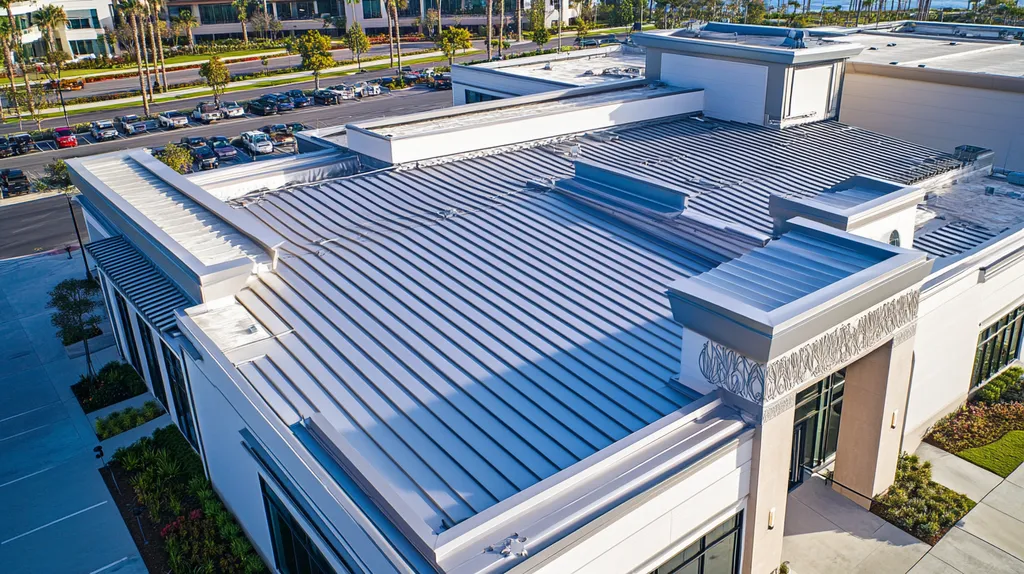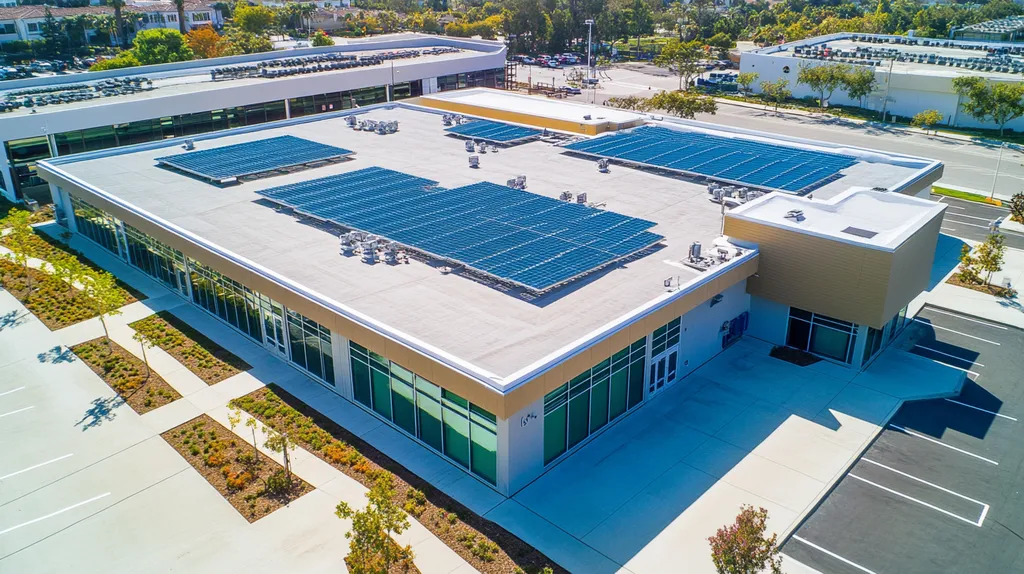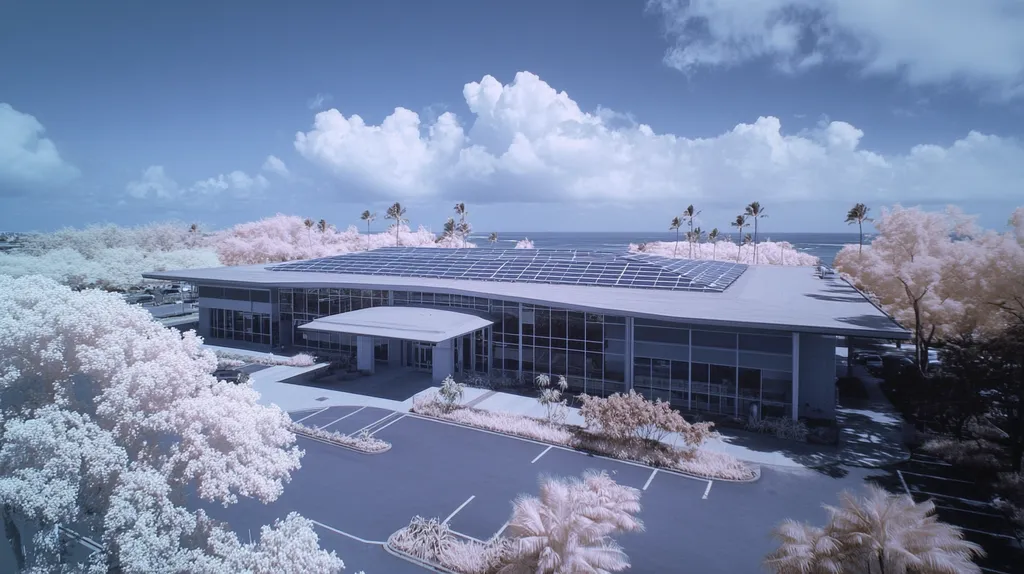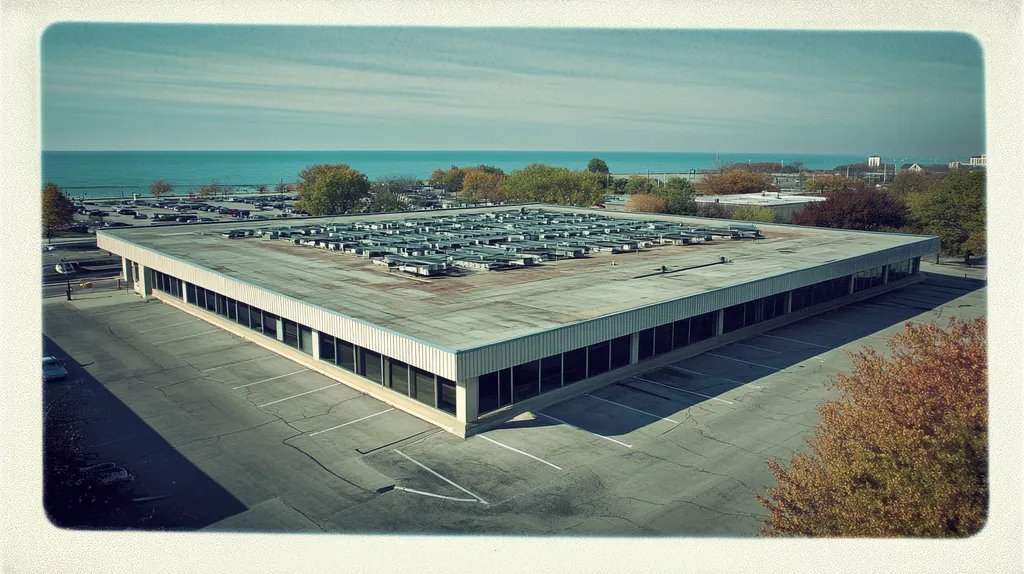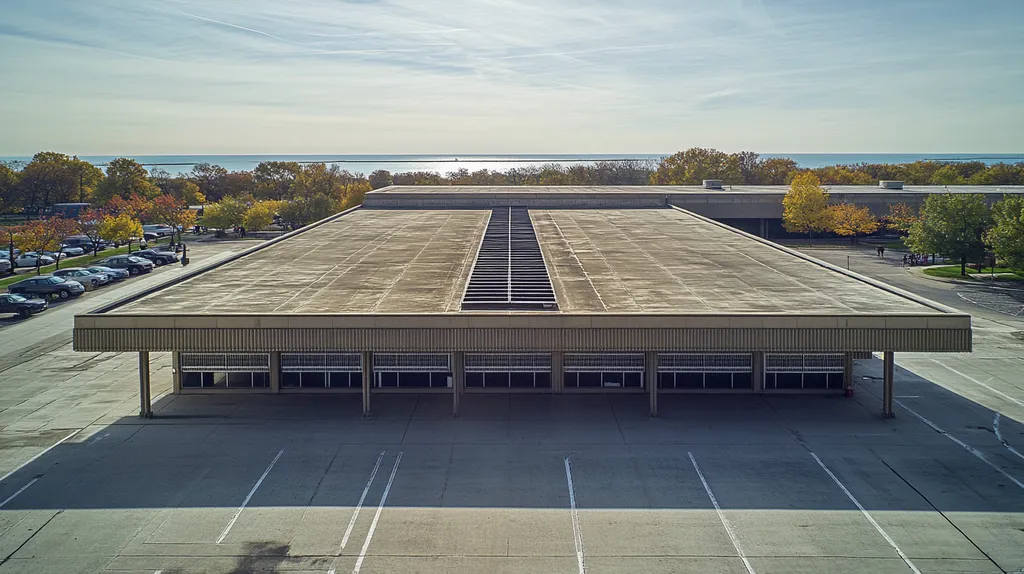Welcome to today’s Battle Royale featuring two roofing heavyweights: “PVC Roofing” in the east corner versus “TPO Roofing” in the west!
Tonight’s showdown pits these contenders against each other across six punishing rounds designed to test every aspect of their performance for supplier proximity on commercial roof costs.
At stake? Millions in potential costs, decades of building protection, and the critical performance demands of modern commercial and industrial facilities.
Our professional judging panel will evaluate each round on technical merit, real-world performance, and value delivery. After all six rounds, we’ll declare our ultimate champion.
Ladies and gentlemen, facility managers and building owners… it’s time to rumble!
ROUND 1: INITIAL COSTS & INSTALLATION
When it comes to commercial roofing decisions, the stakes couldn’t be higher. Every dollar spent on initial installation impacts both short-term budgets and long-term facility operations. The choice between PVC and TPO roofing materials can mean a difference of tens of thousands of dollars, especially when factoring in supplier location and transportation costs.
Material Expenses
Raw material costs form the foundation of any roofing project’s budget. For a typical 20,000-square-foot commercial roof, material costs can range from $40,000 to $100,000 depending on the chosen system and supplier location.
PVC roofing materials command premium prices, often 20-30% higher than TPO alternatives. However, these materials typically offer superior chemical resistance and durability, potentially lasting 5-10 years longer than TPO systems.
TPO materials present an attractive initial price point, making them popular for budget-conscious projects. Yet transportation costs from distant suppliers can add significant expenses, sometimes eliminating the upfront savings advantage.
ADVANTAGE: TPO
Installation Complexity
Installation processes directly impact labor costs and project timelines. The complexity of installation can make or break a roofing budget, particularly when considering crew expertise and availability.
PVC roofing requires specialized welding equipment and highly trained installers, leading to higher labor costs. However, these precise installation methods result in stronger seams and better long-term performance.
TPO installation proves more forgiving and requires less specialized training. This translates to lower labor costs and a larger pool of qualified contractors, especially beneficial when working with local teams.
ADVANTAGE: TPO
Project Timeline
Time is money in commercial roofing projects. Extended installation periods mean longer disruptions to business operations and increased exposure to weather-related risks.
PVC installations typically require more time due to precise welding requirements and detailed quality control procedures. When suppliers are distant, material delivery delays can further extend project timelines.
TPO installations generally move faster, with simplified welding processes and easier material handling. Projects near TPO suppliers benefit from quick material replacements and reduced shipping times.
ADVANTAGE: TPO
ROUND 1 WINNER: TPO
ROUND 2: DURABILITY & LIFESPAN
When evaluating commercial roofing systems, durability and lifespan can make or break your return on investment. A roof that fails prematurely can cost hundreds of thousands in repairs, inventory damage, and business disruption. The distance between your facility and material suppliers plays a crucial role in how quickly you can address issues and maintain your roof’s integrity over time.
Material Resilience
The fundamental durability of roofing materials determines their ability to withstand daily stress and extreme events. Understanding these differences is crucial for making informed long-term investments in your facility’s protection.
PVC roofing demonstrates exceptional resistance to chemicals, UV radiation, and punctures. Its molecular structure remains stable even in extreme temperatures, and its thicker membrane provides superior protection against impacts and wear.
TPO roofing offers good baseline durability and excellent energy efficiency, especially in newer formulations. These membranes provide strong impact resistance and flexibility, making them suitable for many commercial applications. (source: OfficeFinder)
ADVANTAGE: PVC
Weather Response Capability
The ability to quickly repair weather damage can significantly extend a roof’s functional lifespan. Proximity to suppliers becomes critical during emergency responses and seasonal maintenance windows.
PVC roofing’s durability means fewer weather-related emergencies overall. When repairs are needed, however, the specialized materials may take longer to source from distant suppliers, potentially extending damage exposure time.
TPO systems may require more frequent weather-related repairs, but their widespread availability means faster response times. Local sourcing can reduce the window of vulnerability during emergency repairs.
ADVANTAGE: TPO
Long-Term Performance
A roof’s true value emerges over decades of service, where initial material quality meets real-world conditions. The interaction between material characteristics and maintenance accessibility shapes total lifecycle costs.
PVC roofing systems consistently deliver 25-30 year lifespans with proper maintenance. Their superior chemical resistance and weld strength maintain performance even as the membrane ages.
TPO systems typically last 15-20 years before requiring replacement. While newer formulations show promise, their long-term performance record remains shorter than PVC alternatives.
ADVANTAGE: PVC
ROUND 2 WINNER: PVC
ROUND 3: PERFORMANCE FACTORS
Every day your commercial roof faces brutal challenges – from scorching sun to pounding rain to extreme temperature swings. These performance demands make supplier proximity a critical factor in maintaining optimal roof function. The speed of material delivery and accessibility of technical support can mean the difference between minor repairs and catastrophic failures.
Material Integrity
The quality and consistency of roofing materials directly impact building protection and energy efficiency. Shorter supply chains mean less material degradation during transport and storage, especially critical for temperature-sensitive components.
PVC roofing maintains exceptional stability during transport thanks to its molecular structure and manufacturing process. When sourced from nearby suppliers, these materials arrive with optimal welding characteristics and physical properties intact.
TPO materials, while durable, can be more sensitive to extended transport conditions and temperature fluctuations. Local sourcing helps preserve TPO’s beneficial properties, but the material still shows more variability than PVC.
ADVANTAGE: PVC
Thermal Efficiency
A roof’s ability to manage heat transfer directly impacts building energy costs. Labor costs vary significantly by region, affecting both installation quality and long-term thermal performance. (source: AAA)
PVC roofing delivers superior heat reflection and insulation properties that remain consistent over time. Quick access to materials through local suppliers ensures optimal installation timing for maximum thermal benefit.
TPO provides good initial thermal performance but may require more frequent maintenance to maintain efficiency. Distance from suppliers can delay critical adjustments needed to maintain peak thermal protection.
ADVANTAGE: PVC
Long-Term Maintenance Costs
The true cost of a commercial roof emerges through years of maintenance and repairs. Quick access to materials and technical support can dramatically reduce repair times and prevent small issues from escalating.
PVC roofing typically requires fewer repairs due to its superior durability and chemical resistance. When maintenance is needed, having nearby suppliers ensures fast response times and minimal business disruption.
TPO systems often need more frequent maintenance interventions. While repairs may be simpler, the cumulative cost of more frequent service calls and material replacements can add up significantly over time.
ADVANTAGE: PVC
ROUND 3 WINNER: PVC
ROUND 4: MAINTENANCE REQUIREMENTS
Every maintenance decision on a commercial roof carries significant financial implications. A single delayed repair can cascade into structural damage, inventory losses, and business interruptions costing hundreds of thousands of dollars. The proximity of material suppliers plays a crucial role in maintenance response times and the availability of compatible repair materials.
Preventive Maintenance
Regular preventive maintenance forms the foundation of any successful roofing strategy. The accessibility of materials and technical support directly impacts how effectively building owners can maintain their roofing systems.
PVC roofing systems require minimal preventive maintenance due to their inherent durability and chemical resistance. When maintenance is needed, the material’s consistent quality and weldability make repairs straightforward, even years after initial installation.
TPO systems demand more frequent inspections and preventive care to maintain optimal performance. While individual maintenance tasks may be simpler, the cumulative time and effort required typically exceeds that of PVC systems.
ADVANTAGE: PVC
Emergency Response
The speed and effectiveness of emergency repairs often determine whether a minor issue becomes a major crisis. Supplier proximity becomes particularly critical during weather events when multiple buildings in an area may need materials simultaneously.
PVC’s superior durability means fewer emergency situations overall. However, when urgent repairs are needed, the specialized nature of PVC materials can lead to longer wait times if suppliers are distant.
TPO’s wider availability and simpler repair requirements can facilitate faster emergency response times. Local sourcing of TPO materials often allows for same-day repairs, particularly valuable during weather-related emergencies.
ADVANTAGE: TPO
Long-term Maintenance Costs
The true cost of maintenance emerges over decades of service, where material quality meets real-world conditions. Supplier relationships and material availability significantly impact these long-term expenses.
PVC roofing demonstrates exceptional stability over time, requiring fewer interventions and maintaining its repair-friendly characteristics throughout its lifespan. The higher initial material quality translates to lower cumulative maintenance costs.
TPO systems often face increasing maintenance needs as they age, particularly around seams and areas of high stress. While individual repairs may cost less, the frequency of required maintenance typically results in higher total costs over time.
ADVANTAGE: PVC
ROUND 4 WINNER: PVC
ROUND 5: SUSTAINABILITY CREDENTIALS
Environmental responsibility in commercial roofing has become a critical business imperative. With buildings accounting for nearly 40% of energy consumption in developed nations, choosing sustainable roofing solutions directly impacts both operational costs and environmental compliance. The stakes are particularly high when considering how supplier distance affects the total carbon footprint of roofing projects.
Environmental Impact
PVC roofing materials demonstrate exceptional durability, typically lasting 25-30 years before requiring replacement. This longevity significantly reduces waste and the environmental impact of frequent replacements.
However, PVC production involves energy-intensive processes and chemical compounds. When suppliers are distant, the additional transportation requirements further increase the carbon footprint.
TPO manufacturing requires less energy and fewer harmful chemicals than PVC production. Its lighter weight also reduces transportation impacts, making it particularly advantageous when sourced from local suppliers.
Single-ply roofing materials like TPO offer excellent environmental performance while maintaining cost efficiency for commercial applications. (source: Solutions GC)
ADVANTAGE: TPO
Energy Efficiency
The reflective properties of roofing materials significantly impact building energy consumption. Proper installation and maintenance are crucial for maintaining these energy-saving benefits over time.
PVC membranes offer excellent solar reflectivity that remains stable throughout their lifetime. Local supplier relationships ensure quick access to matching materials when repairs are needed to maintain optimal energy performance.
TPO roofing provides superior initial solar reflectance and thermal emittance properties. When suppliers are nearby, maintenance crews can quickly address any issues that might compromise these energy-saving characteristics.
ADVANTAGE: TPO
Material Recyclability
End-of-life considerations are becoming increasingly important in roofing material selection. The availability of local recycling facilities and ease of material processing directly impact sustainability outcomes.
PVC roofing materials are fully recyclable and can be processed into new roofing products. However, the specialized nature of PVC recycling often requires long-distance transportation to appropriate facilities.
TPO materials can also be recycled, though the process is simpler and more widely available. The growing network of TPO suppliers has helped establish more local recycling options, reducing transportation needs.
ADVANTAGE: TPO
ROUND 5 WINNER: TPO
ROUND 6: SPECIALIZED APPLICATIONS
When commercial buildings require specialized roofing solutions, the stakes couldn’t be higher. Every unique application presents distinct challenges that can multiply costs and extend project timelines if not properly addressed. The distance between your facility and material suppliers becomes especially critical when dealing with custom configurations, challenging retrofits, or extreme environmental conditions.
Retrofitting Existing Structures
Retrofitting commercial roofs demands precise material coordination and specialized components. The complexity increases when working around existing equipment, penetrations, and structural elements that can’t be moved or modified.
PVC roofing systems excel in retrofit applications due to their superior flexibility and comprehensive accessory options. Their proven track record with diverse substrates and ability to conform to irregular surfaces makes them ideal for challenging retrofit scenarios.
TPO systems can effectively handle basic retrofits but often struggle with complex transitions and irregular geometries. While material costs may be lower, the need for additional accessories and custom fabrication can quickly erode any initial savings. Large retrofit projects benefit significantly from bulk material ordering and efficient crew scheduling. (source: Nations Roof)
ADVANTAGE: PVC
Complex Configurations
Modern commercial architecture frequently incorporates challenging roof designs that demand specialized solutions. These include multiple elevation changes, curved surfaces, and intricate equipment mounting requirements.
PVC roofing offers superior flexibility and a wider range of pre-fabricated accessories designed specifically for complex configurations. Its enhanced weldability allows for precise detail work around unusual shapes and penetrations.
TPO systems provide adequate performance for basic configurations but may require extensive modifications for complex designs. The limited availability of specialized components can lead to compromises in design or installation quality.
ADVANTAGE: PVC
Environmental Adaptability
Different climates and exposures demand specific performance characteristics from roofing materials. The ability to quickly source appropriate materials and accessories becomes crucial when addressing unique environmental challenges.
PVC roofing demonstrates exceptional resistance to extreme temperatures, chemical exposure, and UV radiation. Its molecular stability and superior formulation maintain performance even in harsh industrial environments.
TPO systems offer good baseline environmental performance but may require additional treatments or upgraded formulations for extreme conditions. While suitable for many applications, they can show limitations in particularly demanding environments.
ADVANTAGE: PVC
ROUND 6 WINNER: PVC
AND THE WINNER IS…
After six punishing rounds of technical analysis, with both contenders trading devastating blows across durability, costs, and performance metrics, we have our verdict!
In a split decision, with a score of 4 rounds to 2, PVC Roofing claims the championship belt! Its knockout performance in durability, long-term performance, maintenance requirements, and specialized applications proved too powerful for TPO to overcome.
But don’t count TPO out, folks! This scrappy contender dominated in initial costs and sustainability, making it a formidable choice for budget-conscious projects where local suppliers can maximize its cost advantages.
Remember, building owners and facility managers: While we’ve witnessed an epic battle tonight, every commercial property brings its own unique requirements to the ring. Local climate conditions, building specifications, and regional supplier networks can all influence which contender best suits your corner.
This analysis serves as your ringside guide, but the final decision requires careful consultation with qualified roofing professionals who can evaluate your specific situation and requirements.
In the high-stakes arena of commercial roofing, true victory comes not from blindly following the champion, but from strategically matching your building’s specific needs with the right contender’s strengths. Now, let’s hear it for tonight’s warriors of weather protection!
FREQUENTLY ASKED QUESTIONS
Q. What are the initial costs of a commercial roof installation?
A. The initial costs depend on material choices and supplier distance. For instance, PVC roofing might be 20-30% higher than TPO. However, this up-front cost must be weighed against long-term performance and savings, which can influence overall budget health.
Q. How does the durability of PVC compare to TPO roofing materials?
A. PVC roofing typically offers better durability and chemical resistance, lasting 25-30 years. TPO systems may last 15-20 years, depending on environmental conditions and maintenance. The overall longevity and resilience make PVC a strong choice for long-term investments.
Q. What performance factors should I consider for my commercial roof?
A. Key performance factors include material integrity, thermal efficiency, and long-term maintenance costs. Choosing a roofing type that withstands environmental stress while providing energy efficiency is crucial for controlling ongoing expenses and ensuring the roof’s effective lifespan.
Q. How often should I perform maintenance on my commercial roof?
A. Regular preventive maintenance is recommended at least twice a year. This proactive approach helps identify issues early, limiting costly repairs down the line. Maintenance frequency may vary based on roofing material and environmental exposure, ensuring your roof remains functional and effective.
Q. How do roofing materials impact sustainability for commercial buildings?
A. Material choice affects energy efficiency, waste reduction, and environmental compliance. TPO generally has lower production energy requirements and more accessible recycling options compared to PVC. The sustainability credentials of your roofing materials can significantly impact operational costs and environmental footprint.
Q. What specialized applications are best suited for PVC roofing materials?
A. PVC roofing is ideal for retrofitting and complex configurations due to its flexibility and range of accessories. Its adaptability makes it suitable for various architectural challenges, while ensuring longevity and durability in demanding environments.
Q. How does supplier proximity influence the overall cost of a commercial roof?
A. Proximity to suppliers can dramatically impact transportation costs, delivery times, and availability of materials. Closer suppliers typically reduce costs and expedite repairs, preventing small issues from escalating. Access to local materials can save time and money on future roof maintenance.

